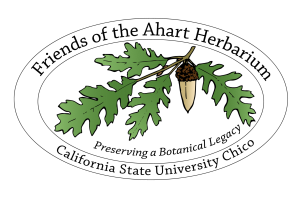Valley Oak (Quercus lobata) and Plant – Animal Interactions
Thursday, June 17, 7:00pm – 8:00pm
Click Here to View the Presentation
Two former recipients of the Jokerst Field Botany Award, Constantin Raether and Drew Gilberti, will present their interesting research on the plant-animal interactions focusing on valley oak, a native oak species of California. Please join us.
Vigor, Phenology, and Genotype: How plant traits explain variation in herbivory on Quercus lobata
By Constantin Raether
Plants under attack by herbivores have a variety of mechanisms to deter or lessen the severity of damage they incur. The ability to reduce herbivore attack, however, is not consistent within a species, and some individuals consequently experience greater damage or herbivore abundance. To explain variation in defense against herbivory, I tested predictions of the Plant Vigor Hypothesis (PVH) and the Phenological Synchrony Hypothesis (PSH). I measured growth rates, leaf phenology, Cynipid species abundance and richness in valley oak (Quercus lobata) trees across two common gardens in 2017 and 2018 to test how vigor and phenology affect herbivore abundance. Trees with higher growth rates had higher abundance of two species of Cynipid as well as overall species richness. I will discuss how that variation plays out between species. Research results demonstrate support of the Plant Vigor Hypothesis, the Phenological Synchrony Hypothesis, and provided evidence that trait interaction and maternal genotype affect abundance of Cynipid wasp species.
Gall Size, Parasitoid Phenology, and Ant Mutualism May Help Explain the Success of the Galling Wasp, Disholcaspis eldoradensis
By Drew Gilberti
Galls, cancer-like growths specialized insects use to house their developing larvae on plant tissue are thought to defend against an assemblage of parasitoids. The galling wasp (Disholcaspis eldoradensis) of valley oak (Quercus lobata) has the notable feature of secreting nectar from their top surfaces, which recruits ants. Ants have been found to deter parasitoids of D. eldoradensis, which kill the developing gall-makers. However, these complex interactions may be influenced by other overlooked factors, such as gall size, gall aggregation, and parasitoid phenology. My study, completed at the Chico Seed Orchard, aimed to explore which factors lead to galling wasp mortality.

